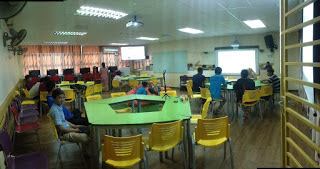Mini Project

Mini Project Presentation As usual we started our class at 2pm at TECC Room. Today, we have a Mini Project Presentation about Relational Algebra. This Mini Project has 20% of PB which is the second biggest of all PB that we have for subject Database System. There have 5 groups that must be present in front of Madam Shamsiah while she recorded. Relational Algebra is a theoretical language with operations that work on one or more relations to define another relation without changing the original relation(s). B oth the operands and the results are relations. Below is the explanation of each Relational Algebra. 1. SELECT The selection operation works on a single r elation R and defines a relation that contains only those tuples of R that satisfy the specified condition ( predicate ). Syntax: predicate (R) Example:- ...




